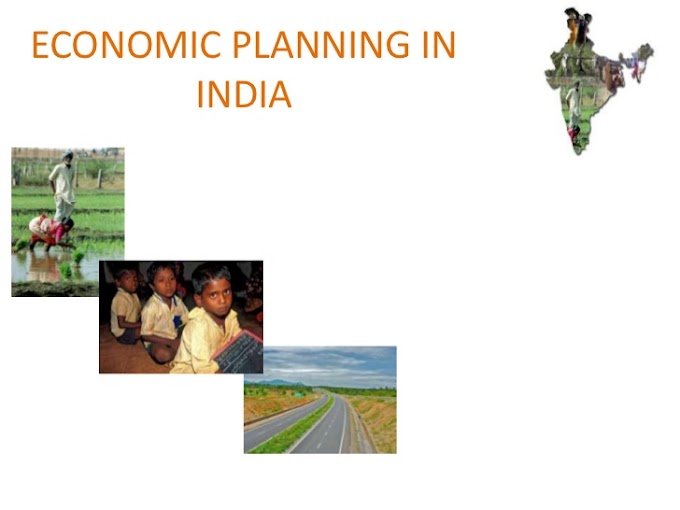First Phase (1758 – 1812)
- The British East India Co. showed very little interest in the education of its subjects during this period, the 2 minor exceptions being :
- The Calcutta Madrsah set up by Warren Hastings in 1781 for the study and teaching of Muslim law and subjects.
- The Sanskrit college at Varanasi by Jonathan Duncan in 1792 for the study of Hindu Law and Philosophy.
- Both were designed to provide a regular supply of qualified Indians to help the administration of law in the courts of Co.
Second Phase (1813 – 1853)
- Due to the strong pressure exerted on the Co. by the Christian missionaries and many humanitarians, including some Indians, to encourage and promote modern education in India, The Charter Act of 1813 required the Co. to spend rupees 1 lakh annually for encouraging learned Indians and promoting the knowledge of modern sciences in India.
- Two controversies about the nature of education arose during the part of this phase. They were :
- Whether to lay emphasis on the promotion of modern western studies or on the expansion of traditional Indian learning?
- Whether to adopt Indian languages or English as the medium of instruction in modern schools and colleges to spread western learning?
- These 2 controversies were settled in 1835 when Lord William Bentinck (with the support of R.M. Roy) applied English medium.
- In 1844, Lord Hardinge decided to give govt, employment to Indians educated in English Schools. The success was thus assured (of English education). It made good progress in the 3 presidencies of Bengals Bombay and Madras where the number of schools and colleges increased.
- Three other developments were :
-
- A great upsurge in the activities of the missionaries who did pioneer work in quite a few fields of modern education.
- Establishment of medical, engineering and law colleges, which marked a beginning in professional education.
- Official sanction accorded to education of girls (Lord Dalhousie, in fact, offered the open support of govt.).
- The Govt, policy of opening a few English schools and colleges instead of a large number of elementary schools led to the neglect of education of masses.
- To cover up this defect in their policy, the British took recourse to the so – called ‘Downward Filtration Theory’ which meant that education and modern ideas were supposed to filter or radiate downward from the upper classes.
- This policy continued till the very end of British rule, although it was officially abandoned in 1854.
Third Phase (1854 – 1900)
- The Educational Dispatch of 1854 was also called Wood’s Dispatch (after Sir Charles Wood, the then President of Board of Control, who became the first Secretary of State for India).
- It is considered as the Magna Carta of English Education in India (forms a landmark in the history of modern education in India).
- It rejected the ‘filtration theory’ and laid stress on mass education, female education and improvement of vernaculars, favoured secularism in Education.
- Creation of Education Departments in the provinces of Bombay, Madras, Bengal, N.W. Provinces and Punjab in 1855; Organizations of Indian Education Service in 1897 to cover the senior most posts.
- Establishment of universities of Calcutta (Jan 1857) Bombay (Jul 1857), Madras (Sep 1857), Punjab (1882) and Allahabad (1887).
- Lord Ripon appointed Hunter Commission (under Sir WW Hunter) :
-
- It recommended that local bodies (distt. boards and municipalities) should be entrusted with the management of primary schools.
- Also said that govt, should maintain only a few schools and colleges; others to be left to private hands.
Fourth Phase (1901 – 1920)
- Lord Curzon appointed a Universities Commission under Thomas Raleigh (Law member of the Viceroy’s Executive Council) in 1902, and based on his recommendations Indian Universities Act of 1904 was passed.
- It enabled the universities to assume teaching functions (hitherto they were mainly examining bodies), periodic inspection of institutions, speedier transaction of business, strict conditions for affiliation etc.
- Criticized by nationalists for its tightening govt, control over universities.
- In 1910, a separate department of Education was established at the Centre.
- The Saddler Commission was appointed by Lord Chelmsford to review the working of Calcutta University (2 Indians: Sir Ashutosh Mukherji and Dr. Ziauddin Ahmed.). Main recommendations were:
- Secondary Education by a Board of Secondary education and duration of degree course be 3 yrs.
- 7 new universities were opened (Total 12 now). They were : Banaras, Mysore, Patna, Aligarh, Dhaka, Lucknow and Osmania.
- Kashi Vidyapeeth and Jamia Milia Islamia were established.
- University course divided into pass course and Honours.
Fifth Phase (1921 – 1947)
- Came under Indian control officially, as it became a provincial subject administered by provincial legislature. Thus, expansions started everywhere.
- Increase in number of universities (20 in 1947); improvement in the quality of higher education (on recommendations of Saddler Commission); establishment of an inter – University Board (1924) and beginning of inter collegiate and inter – university activities.
- Achievement in women’s education and education of backward classes.
Hartog Committee 1929
- Recommended the policy of consolidation and improvement of Primary education.
- Recommended a selective system of admission to universities and diversified courses leading to industrial and commercial careers.
- Universities should be improved.
- Wardha scheme of Basic Education (1937), worked out by the Zakir Hussain Committee after Gandhiji published a series of articles in the HariJan.
Sargeant Plan of Education 1944
- Establishment of elementary schools and high school.
- Universal and compulsory education for all children between the ages of 6 – 11.
- High schools of 2 types :
- Academic.
- Technical and Vocational.
- Intermediate courses were to be abolished.
The British conquerors were entirely different from the previous conquerors. Through laws and administrative, economic and fiscal policies, the British government in England and Company’s administration in India used their powers to the advantage of British manufacturers and to the detriment of the Indian socio-political and economic fabric.
Phases of Economic Policy in India
1600-1757:
The East India Company was a purely trading company dealing with import of goods and precious metals into India and export of spices and textiles.
1757 - 1813 (The Mercantilist Phase)
- The East India Company monopolized trade and began direct plunder of India’s wealth.
- They could impose their own prices that had no relation to the costs of production. This was the phase of buccaneering capitalism whereby wealth flowed out of the barrel of the trader’s guns.
- The company used its political power to monopolize trade & dictate terms to the weavers of Bengal
- The company used revenue of Bengal to finance exports oi Indian goods.
1813-1858 (The Industrial Phase)
The commercial policy of the East India Company after 1813 was guided by the needs of the British industry
- The British mercantile industrial capitalist class exploited India as Industrial Revolution in Britain completely transformed Britain’s economy
- Charter Act of 1813 allowed one way free trade for British citizens resulting in Indian markets flooded with cheap & machine made imports. Indians lost not only their foreign markets hut their markets in India too.
- India was now forced to export raw materials consisting of raw cotton jute and silk, oilseeds, wheal, indigo and lea, and import finished products.
- Indian products had to compete with British products with heavy import duties on entry into Britain. 1860 & After (Finance Colonialism): The essence of 19th century colonialism lay in the transformation of India into a supplier of foodstuffs and raw materials to the metropolis, a market for metropolitan manufactures and a field for investment of British capital.
- Started with the emergence of the phase of Finance Capitalism m Britain. The rebellion of KS57 was the key factor in the change of the nature of the colonialism.
- The British introduced roads and railways, post and telegraph, banking and other services under the ‘guaranteed interests’ schemes (government paid a minimum dividend even if profits were nonexistent). Various investments by the British capitalists were also made in India.
- As a result of this, the burden of British public debts kept on increasing and India became, in the real sense, a colony of Britain.
- R C Dutta & Dadabhai Naoroji first cited the drain of wealth theory Naoroji brought ii to light in his book titled “Poverty And Un-British Rule In India” R C Dutt blamed the British policies for, Indian economic ills in his book ‘Economic History of India’ (1901-03)
- Drain of wealth refers to a portion of national product of India, which was not available for consumption of its people
- Drain of wealth began in 1757 after Battle e>t Plassey when the company’s servants began to extort fortunes from Indian rulers, zamindars, merchants and common people and send home
- In 1765 the company acquired the Diwani of Bengal & began purchase the Indian goods out of the revenue of Bengal and exported them These purchases were known as Company’s investment
- Duty free inland trade provided British merchants a competitive edge over their Indian counterparts
Constituents of the Drain
- Home charges: Costs of the Secretary of State’s India Office, East India Company’s military adventures, cost of suppressing the Mutiny of 1X57 and the compensation to the company’s share holders, pensions lo the British Indian officials and army officers, costs of army training, transport, equipments and campaigns outside India and guaranteed interests on railways
- Remittances: To England (a part of their salaries, incomes and savings) by English Civil servants, Military and railway employee’s lawyers, doctors etc
- Foreign trade: The phase of finance imperialism entered India with the introduction of railways development of plantations, mines, banking and factories financed through British capital Much of
- the burden of the expanding railway network was met by the Indian taxpayer through the guaranteed interest scheme.
Permanent Settlement
- Introduced in Bengal, Bihar, Orissa, and districts of Benaras & Northern districts of Madras by Lord Cornwallis in 1793.
- John Shore planned the Permanent Settlement.
- It declared Zamindars as the owners of the land. Hence. they’could keep l/l1th of the revenue collected to themselves while the British got a Fixed share of 10/11th of the revenue collected. The Zamindars were free to fix the rents
- Assured of their ownership, many zamindars stayed in towns’(absentee landlordism) and exploited their ten ants.
Ryotwari System
- Introduced in Bombay, Madras and Assam. Munro (Viceroy) and Charles Reed recommended it.
- In this, a direct settlement was made between the government and the ryot (cultivator).
- The revenue was fixed for a period not exceeding 30 years, on the basis of the quality of the soil and the nature of the crop. It was based on the scientific rent theory of Ricardo.
- The position of the cultivator became more secure but the rigid system of revenue collecton often forced him into the clutches of the moneylender.
- Besides, the government itself became a big zamindar and and retained the right to enhance revenue at will while the cultivator was left at the mercy of its officers.
Mahalwari System
- Modified version of Zamindari settlement introduced in the Ganga valley, NWFP. parts of Central India & Punjab.
- Revenue settlement was to be made by village or estates with landlords. In western Uttar Pradesh, a settlement was made with the village communities, which maintained a form of common ownership known as Bhaichara, or with Mahals, which were groups of villages.
- Revenue was periodically revised.
Colonial Impact of Land Revenue Systems
- The land settlements introduced market economy and did away with customary rights. Cash payment of revenue encouraged money-lending activity.
- It sharpened social differentiation. Rich had access to the courts to defend their properly.
- Forcible growing of commercial crops proved hazardous for the peasants because they had to buy food grains at high prices and sell cash crops at low prices.
- The stability of the Indian Villages was shaken and the setup of the rural society began to break up.





